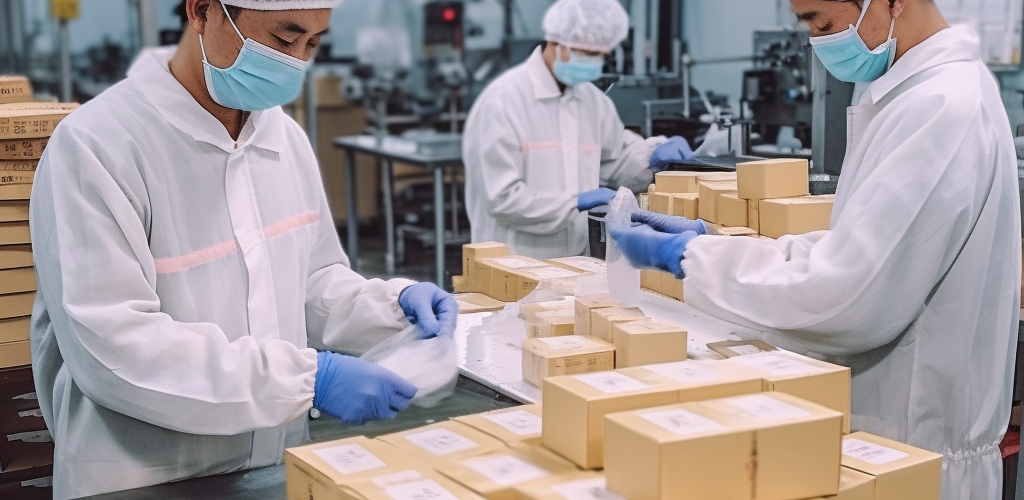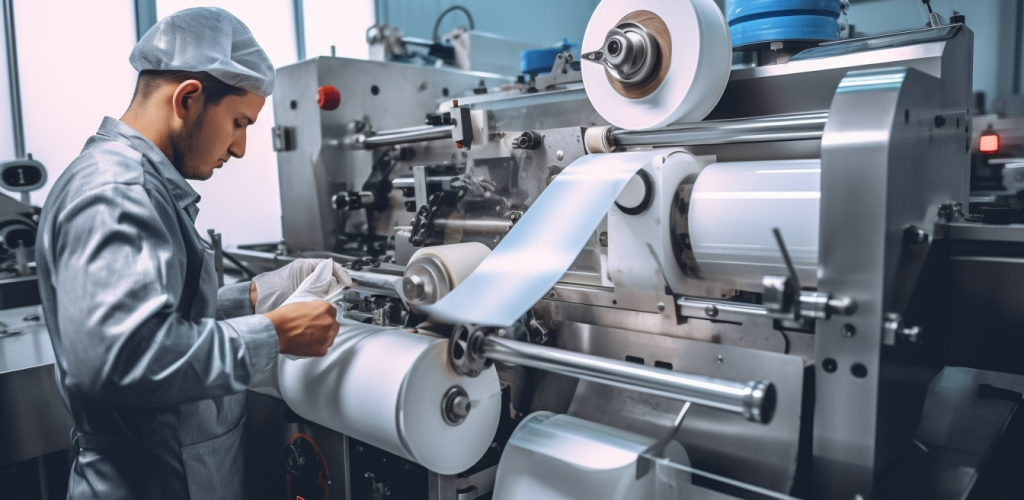Introduction
In an era where the first impression can make or break a product’s success, the significance of packaging cannot be understated. It’s not just about aesthetics; it’s about ensuring that products reach consumers in perfect condition, conveying brand values and creating an unboxing experience that resonates. This is where the meticulous process of packaging quality control steps in, serving as the unsung hero of the modern commerce world.
At Sam’s Packaging, we’re not just observers of this trend. Our unwavering dedication to quality standards stands testament to our belief that the integrity of packaging is paramount in every product’s journey from manufacturing to the hands of the consumer.
1. The Need for Quality Control in Packaging

A product’s packaging is the first touchpoint for consumers, setting the stage for the brand experience. Imagine ordering a luxury item online, only to receive it in a battered box or poorly sealed package. The initial excitement would undoubtedly be marred, leading to a negative first impression. That’s why ensuring impeccable packaging quality is more than just a cosmetic concern—it’s a trust builder.
First Impressions and Consumer Trust:
Before a consumer gets to the actual product, they engage with its packaging. A well-designed, sturdy package signifies attention to detail and a commitment to quality. On the other hand, a damaged or subpar package can raise doubts about the product inside, even if it’s perfectly fine. In a competitive marketplace, where choices abound, trust is a pivotal differentiator.
Protecting the Product - Functionality and Design:
Beyond aesthetics, packaging has a functional role: protecting the product during transit and storage. Quality control ensures that the packaging materials used are robust and fit for purpose. After all, what good is a visually stunning package if it fails to protect its contents? The intersection of functionality and design is where the magic happens, striking a balance between visual appeal and practical utility. This equilibrium is a core principle at Sam’s Packaging, where we ensure our packaging solutions are both eye-catching and effective.
2. Steps in Packaging Quality Control

Packaging quality control isn’t a one-off task, but a multi-step process ensuring every package, whether it’s a single box or a thousand, reflects the brand’s commitment to excellence. Here’s how a holistic approach to quality control unfolds:
2.1 Material Inspection:
Before any actual packaging production begins, it’s crucial to inspect the raw materials. Are they of the desired quality? Do they align with the brand’s eco-friendly aspirations or strength requirements? This step ensures that the foundational elements of the packaging meet set standards. At Sam’s, we believe in getting things right from the outset. Our material selection commences with a meticulous inspection, ensuring only the best raw materials are used.
2.2 Design and Prototype Testing:
Once the materials pass inspection, the focus shifts to the design. An appealing design that doesn’t function well in real-world scenarios doesn’t serve its purpose. This is where prototype testing comes in. Initial design evaluations ensure the packaging is both aesthetically pleasing and practical. By creating a prototype, potential design flaws are identified and rectified before entering mass production, saving both time and resources.
2.3 Production Monitoring:
With the design finalized, the mass production of the packaging begins. However, the quality control process doesn’t take a backseat. Regular checks during the production process ensure consistency and adherence to set standards. Depending on the product and scale, these checks might be automated, manual, or a combination of both. Each method has its advantages, and the choice often depends on the specific needs of the production run.
2.4 Finished Product Inspection:
The final and perhaps most critical step in packaging quality control is the inspection of the finished product. Even with rigorous checks throughout the production process, it’s essential to evaluate the final product for both functionality and appearance. This ensures that the consumer receives a package that’s both beautiful and robust.
Data Point: In recent years, a significant percentage of product recalls were related to packaging faults, underscoring the vital importance of thorough finished product inspections.
3. The Role of Technology in Quality Control

As industries evolve, so does the technology supporting them. Packaging quality control is no exception. The integration of cutting-edge technologies has revolutionized the way companies approach and ensure product packaging quality. Let’s delve into how these technological advancements bolster the quality control process:
3.1 Automated Inspection Systems:
Automation has been a game-changer in the realm of quality control. Automated inspection systems offer the dual benefits of speed and consistency, allowing for large-scale quality checks in a fraction of the time manual inspections might take. Furthermore, these systems substantially reduce the likelihood of human error, a factor that can sometimes compromise quality. At Sam’s Packaging, we recognize the immense value these systems bring. By leveraging state-of-the-art technologies, we guarantee that the packaging solutions we offer are of unparalleled quality, batch after batch.
3.2 Digital Prototyping and Simulation:
The digital age has ushered in tools that allow us to visualize and test our designs in a virtual environment. With digital prototyping and simulation, companies can predict the real-world performance of their packaging designs without the need for exhaustive physical testing. This not only speeds up the design process but also ensures that potential challenges are identified and addressed early on. By simulating various scenarios, such as pressure points or environmental impacts, we can fine-tune designs to ensure they stand up to real-world demands.
4. Training and Skill Development

While technology and machinery play an undeniable role in enhancing packaging quality, the significance of human insight and expertise remains unparalleled. Quality control is not just about identifying faults; it’s about understanding them, deciphering their origins, and ensuring they don’t recur. This depth of understanding is achieved through continuous training and skill development.
4.1 Importance of Human Insight:
In the age of machines, one might be tempted to underestimate the value of human intuition and judgment. However, some nuances in quality control can be best understood and managed by trained professionals with a keen eye for detail. At Sam’s, we deeply value the expertise our team brings to the table. Continuous training ensures that our team not only maintains but consistently elevates the benchmark of industry standards. Their ability to perceive subtleties and make informed decisions elevates the quality of our offerings.
4.2 Regular Quality Control Workshops:
The world of packaging is ever-evolving. New materials, techniques, and challenges arise regularly. To ensure that our team is always ahead of the curve, we conduct regular quality control workshops. These sessions are designed to update our professionals on the latest quality control techniques, tools, and best practices. By investing in the growth and knowledge of our team, we solidify our commitment to delivering nothing but the best to our clients.
5. Environmental and Ethical Considerations

In today’s world, quality control in packaging goes beyond just ensuring a product’s visual appeal and functionality. Consumers are increasingly concerned about the ethical and environmental implications of their purchases. A company’s commitment to eco-friendly practices and ethical labor standards plays a crucial role in shaping consumer perceptions and trust.
The global push towards sustainability has urged businesses to reconsider their packaging materials and methods. Using recycled materials, reducing waste, and adopting designs that minimize environmental impact are some of the prevalent practices. However, it’s essential to ensure that these eco-friendly choices don’t compromise the package’s primary purpose: protection and presentation. At Sam’s Packaging, we are proud to harmonize these dual needs. By choosing sustainable materials and production methods, we not only uphold our commitment to the environment but also ensure that quality remains uncompromised.
5.2 Ethical Labor Practices in Quality Control:
The process of ensuring quality isn’t just about the end product; it’s also about the means to achieve it. Ethical labor practices are integral to any reputable quality control process. This includes ensuring safe working conditions, fair wages, and regular training for all employees involved in the production process. We believe that the highest quality products emerge from an environment where every individual is treated with respect and dignity. Our commitment to ethical labor practices is unwavering, ensuring fairness and safety in all operations, from material sourcing to final inspections.
6. Challenges and Overcoming Them
Every process comes with its own set of challenges, and quality control in packaging is no exception. The packaging industry’s dynamic nature, combined with the ever-evolving consumer preferences, can pose hurdles. But at Sam’s Packaging, we believe that every challenge is an opportunity to innovate and improve. Here’s a glimpse into some common obstacles and our strategies to navigate them:
6.1 Adapting to New Materials and Designs:
The landscape of packaging materials and designs is perpetually changing. Innovations introduce new materials, and design trends shift based on consumer behavior and technological advancements. While these changes can create an exciting space for creativity, they also demand constant adaptation and learning. For quality control teams, understanding the properties of new materials or the intricacies of a novel design is crucial. We invest time in regular training sessions, workshops, and market research to ensure our team is always equipped with the latest knowledge.
6.2 Maintaining Consistency across Large Batches:
In the age of mass production, ensuring that the ten-thousandth piece is as impeccable as the first is a daunting task. The challenge lies in striking a balance between production speed and consistent quality. Automated systems and machinery can expedite the production process, but they must be regularly calibrated and maintained to ensure uniformity. Moreover, periodic manual checks by trained eyes are invaluable. At Sam’s, we’ve optimized our processes, employing a combination of technology and human insight, ensuring that every product, irrespective of its place in the batch, adheres to our high-quality benchmarks.
Conclusion
In today’s fast-paced market, packaging does more than just encase a product; it’s a statement of quality, trust, and brand integrity. Rigorous packaging quality control isn’t just a process – it’s a commitment to delivering nothing short of excellence to consumers. It’s about making that first impression count, protecting the product within, and standing out on crowded shelves.
At Sam’s Packaging, we don’t just see packaging; we see a promise. A promise that, with every fold, every seal, and every design, we are delivering a standard of quality that resonates with our dedication and expertise.
If quality is not just a requirement but a brand ethos for you, we’re here to partner in that vision. Reach out to Sam’s Packaging and let’s embark on a journey of packaging brilliance, ensuring meticulous quality at every twist and turn.




